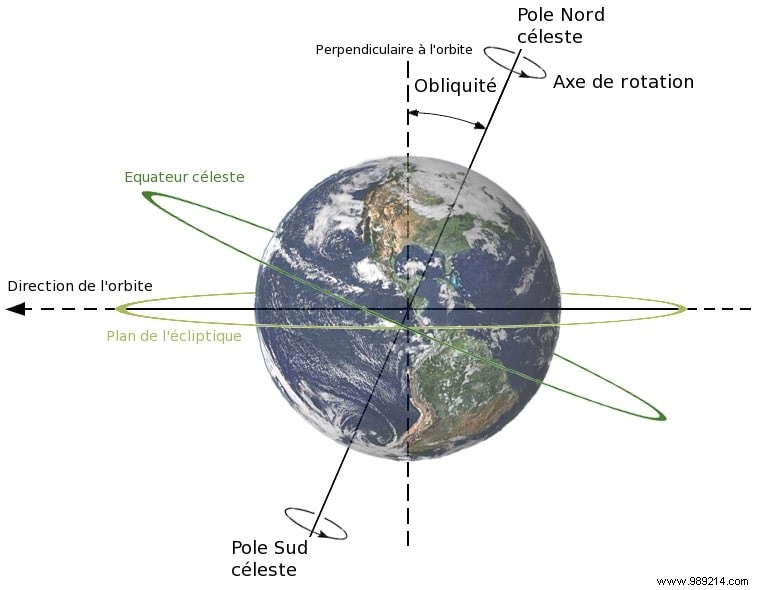Current astrophysical models describe the formation of planets from rotating circumstellar disks. This rotational movement is then transmitted to the protoplanet in formation by virtue of the conservation of angular momentum. All planets are therefore supposed to rotate, and the Earth is no exception. But what would happen if, suddenly, our planet stopped spinning?
If the rotation stopped, the angular momentum of every object on Earth would rip its surface, which would be a real disaster. However, as James Zimbelman, geologist at the Smithsonian’s National Air and Space Museum points out, , there is no natural force that would prevent the Earth from rotating. This is partly why our planet has been rotating since its formation.
The Earth makes a complete rotation on its axis every 23 hours, 56 minutes and 4.09053 seconds. This translates to the equator moving at about 1770 km/h, with rotational speed decreasing to zero at the poles, according to Zimbelman. If the planet were to come to an abrupt halt, the angular momentum imparted to air, water, and even rocks along the equator would continue to move at this speed of 1770 km/h. The movement would scour the surface while tearing it apart and sending shards into the higher regions of atmosphere and space.

Linear momentum is the product of an object's mass and its velocity (direction and velocity). A passenger in a moving car that comes to a sudden stop will continue to move forward due to linear momentum. Angular momentum is a rotational analogue of linear momentum. It is the product of the moment of inertia (the rotational force required to spin the mass) and the angular velocity. One of the fundamental principles of physics is the conservation of angular momentum. Once something spins, you have to exert the same force in the opposite direction to keep it from spinning.
According to Zimbelman, the pieces that broke away from the surface would regain some rotation as the Earth and its remnants continued on their way around the Sun. Eventually, the planet's gravitational pull would bring the halo of fragments back with an unexpected effect. “What Isaac Newton helped us to understand with classical mechanics is that the pieces that accumulate and approach each other release some of their own energy in the form of heat says Zimbelman.
Remnants that ended up in the far reaches of the atmosphere and outer space would be pulled to the surface by the planet's gravitational pull, and they would release energy upon impact. The constant bombardment of these chunks would liquefy the crust into an ocean of molten rock, Zimbelman says. Eventually, the colliding fragments would be reabsorbed into the molten sea through a process called accretion.
The rapid and destructive transition would also vaporize most of the water on the planet's surface. While most of this vaporized water would be lost, some could be incorporated into newly solidified minerals, such as olivine. Finally, not all fragments would be reabsorbed by accretion. Some of the planetary pieces would be swept away by the Moon's gravitational pull, bombarding the nearby satellite and creating countless more craters on its surface.